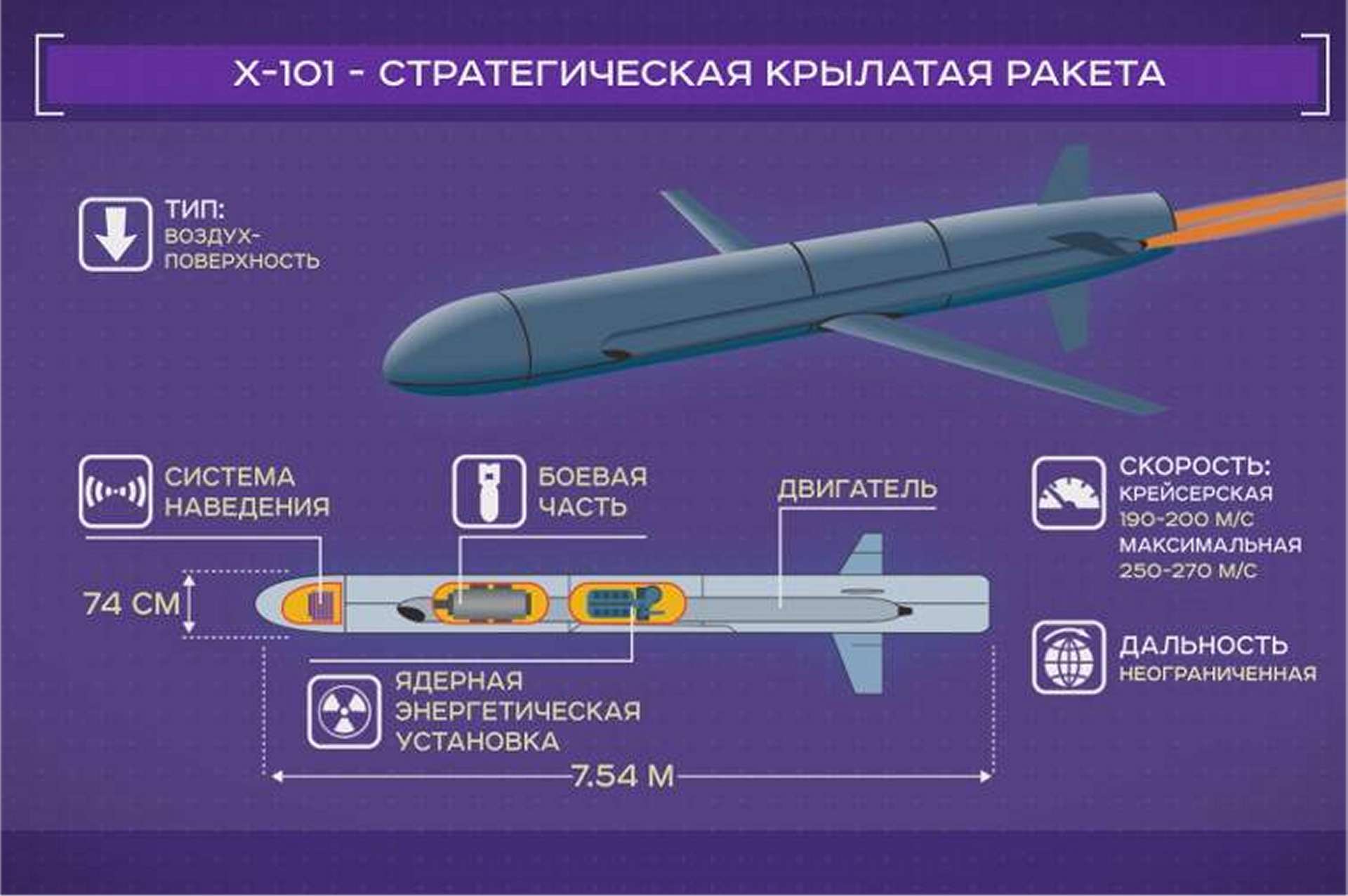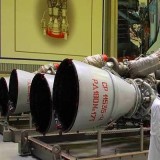Kh-101 Missile: A Threat in Ukraine’s Conflict Targeting Strategic Infrastructure

{loadposition bannertop}
{loadposition sidebarpub}
The Kh-101 missile has rapidly become a cornerstone of Russia’s strategy in the Ukraine conflict, representing a new tier of precision-guided weaponry aimed at crippling critical infrastructure. The missile is particularly effective in targeting logistical chains and bridges deep within enemy territory. Its capabilities have significantly shifted the dynamics of the battlefield, introducing a new level of strategic pressure on Ukraine’s operational planning.Follow Army Recognition on Google News at this link
Kh-101 missile: Russia’s precision weapon reshaping the Ukraine conflict by targeting critical infrastructure and disrupting logistical lifelines. (Picture source: Izvestia)
The Kh-101 is an air-launched cruise missile developed by Russia to deliver high-precision strikes against key targets. Its design incorporates advanced stealth features, enabling it to evade radar detection and penetrate sophisticated air defense systems. With an operational range exceeding 4,500 kilometers, the missile can be launched from platforms far from the reach of Ukrainian interceptors, allowing it to strike targets deep behind the lines of engagement. Its precision is another defining characteristic, with a minimal margin of error that ensures the destruction of specific objectives such as bridges, rail hubs, and other critical nodes in Ukraine’s logistical network.
In the current conflict, the Kh-101 has been deployed to devastating effect. Its primary targets include transport infrastructure vital for the movement of troops, ammunition, and supplies. The deliberate targeting of bridges has created significant disruptions, forcing Ukrainian forces to reroute logistics through longer, less secure pathways. This not only delays the delivery of essential resources but also complicates the planning and execution of military operations. By severing key supply routes, the missile amplifies the logistical strain on Ukraine’s armed forces, weakening their ability to respond effectively to ongoing offensives.
The effectiveness of the Kh-101 is amplified by the challenges faced by traditional airstrike methods. Damantsev noted that Ukraine’s air defense networks, particularly in areas near the frontlines, have developed to a level that renders the use of conventional bombers with heavy munitions increasingly risky. This has elevated the role of precision-guided missiles like the Kh-101, which can achieve similar strategic objectives without endangering manned aircraft.
The use of the Kh-101 in the conflict highlights the increasing reliance on long-range, precision-strike capabilities in modern warfare. These weapons not only deliver tactical results but also serve as tools of strategic pressure, disrupting the enemy’s ability to sustain operations and eroding morale by targeting civilian and military infrastructure alike. The missile’s deployment underscores a shift in the balance of power on the battlefield, where technology and precision are as decisive as troop movements and firepower.

{loadposition bannertop}
{loadposition sidebarpub}
The Kh-101 missile has rapidly become a cornerstone of Russia’s strategy in the Ukraine conflict, representing a new tier of precision-guided weaponry aimed at crippling critical infrastructure. The missile is particularly effective in targeting logistical chains and bridges deep within enemy territory. Its capabilities have significantly shifted the dynamics of the battlefield, introducing a new level of strategic pressure on Ukraine’s operational planning.
Follow Army Recognition on Google News at this link
Kh-101 missile: Russia’s precision weapon reshaping the Ukraine conflict by targeting critical infrastructure and disrupting logistical lifelines. (Picture source: Izvestia)
The Kh-101 is an air-launched cruise missile developed by Russia to deliver high-precision strikes against key targets. Its design incorporates advanced stealth features, enabling it to evade radar detection and penetrate sophisticated air defense systems. With an operational range exceeding 4,500 kilometers, the missile can be launched from platforms far from the reach of Ukrainian interceptors, allowing it to strike targets deep behind the lines of engagement. Its precision is another defining characteristic, with a minimal margin of error that ensures the destruction of specific objectives such as bridges, rail hubs, and other critical nodes in Ukraine’s logistical network.
In the current conflict, the Kh-101 has been deployed to devastating effect. Its primary targets include transport infrastructure vital for the movement of troops, ammunition, and supplies. The deliberate targeting of bridges has created significant disruptions, forcing Ukrainian forces to reroute logistics through longer, less secure pathways. This not only delays the delivery of essential resources but also complicates the planning and execution of military operations. By severing key supply routes, the missile amplifies the logistical strain on Ukraine’s armed forces, weakening their ability to respond effectively to ongoing offensives.
The effectiveness of the Kh-101 is amplified by the challenges faced by traditional airstrike methods. Damantsev noted that Ukraine’s air defense networks, particularly in areas near the frontlines, have developed to a level that renders the use of conventional bombers with heavy munitions increasingly risky. This has elevated the role of precision-guided missiles like the Kh-101, which can achieve similar strategic objectives without endangering manned aircraft.
The use of the Kh-101 in the conflict highlights the increasing reliance on long-range, precision-strike capabilities in modern warfare. These weapons not only deliver tactical results but also serve as tools of strategic pressure, disrupting the enemy’s ability to sustain operations and eroding morale by targeting civilian and military infrastructure alike. The missile’s deployment underscores a shift in the balance of power on the battlefield, where technology and precision are as decisive as troop movements and firepower.




